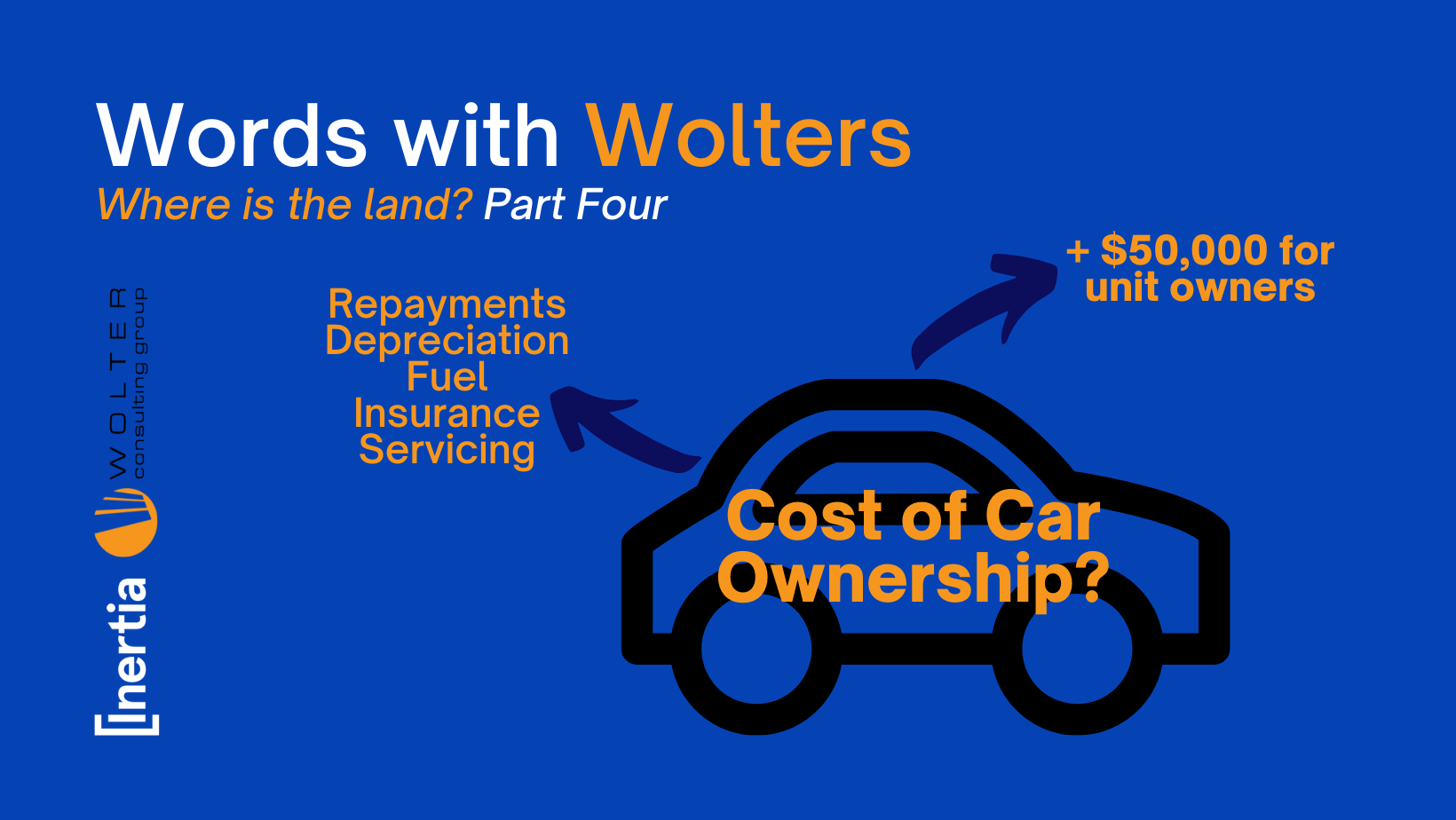The Cost of Car Ownership

When we think of car ownership, we think of the usual suspects:
- Repayments
- Depreciation
- Fuel
- Insurance
- Servicing
But what we often overlook is the cost of parking your car overnight, especially if you live in a unit.
According to Canstar Blue, Queenslanders spend on average $42,266[1] buying a new vehicle. Would it surprise you to know that Australian’s who own units add an additional $50,000 onto the top of the car price if they have a parking space in their unit?
Because that is the average cost of adding a car park to a unit in Brisbane. For the industry and for buyers, that is causing a challenge, and it is being driven by old-world thinking when it comes to car ownership. The reality is that Australians are falling out of love with the car, particularly younger Australians.
According to John Ruggiero, managing director of Automotive Marketing Australia, “Owning a car now is a luxury. Millennials don’t need to travel as much. They take public transport. Their way of communicating with each other is far easier.”
In addition, we have seen the rise of ridesharing on-demand vehicle rental. We will soon see driverless vehicles as well as major public transport projects coming to life, forever changing how we navigate our cities. We also see a growth in remote working, another reason why more and more younger Australians are turning their back on car ownership.
So what does this have to do with development? According to Ryan Maclellan of Wolters, the answer starts with outdated planning regulations, “When a developer runs the numbers on a project, one of the highest costs they have to factor in is car parking, and at present, the number of car parks required per unit has not changed with the times. It is still wedded to the days when every adult in a family had a car of their own, and while that may be true across traditional suburbs, it is far from the case in the inner cities or along major public transport routes where medium and high-density developments tend to occur.”
“If we think about development as a game of Tetris, the skills comes from maximising the available space. But when it comes to car parks, we have situations where regulations insist that a certain number of car parks are provided, and that is usually accompanied by a reduction in the number of units. This changes the overall financials of a project and increases the cost per unit to the developer and, therefore, to any buyer. Prices increase, affordability becomes challenging, and people pay for car spaces that they do not need.”
An example of a current development sheds some light on the challenges. In construction in the city’s inner northwest, around 10km from the Brisbane CBD, metres from a main train station and large Retail First shopping centre, the location is perfect for owners wishing to ditch the car. Comprising 14 two-bedroom two bathroom units, the developer must provide 24 carparks for 14 units, plus an additional seven visitor car parks. The result a $50,000 price difference between units with one or two carparks, which seems a high price to pay for many owners who will turn them into storage cages.
“What we are seeing is scenarios where development becomes unfeasible because the numbers simply do not stack up and rather than maximise the opportunity, units are removed from development because of the cost of adding superfluous car parks. For the industry, it doesn’t make sense to be hamstrung by an out of date way of thinking, and it leads to smaller developments, more expensive properties and fewer and fewer opportunities for people to live where they want to live.”
Principal of Structures at Inertia Engineering, Phil Latham, echoes Ryan’s thoughts.
“Average cars are getting larger; carpark sizes are increasing, and thus more space is being dedicated to a form of transport that is slowly being eroded. What about car lay-by bays for ride sharing? In a world where we are targeting net zero and everyone spruiks sustainability, why are we building new buildings for the next 50 years when we expect that a large portion of them will be redundant? It’s like that quote from Bogota, the former mayor of Colombia “A developed country is not a place where the poor have cars. It’s where the rich use public transportation.” With upcoming the Olympics, we really have a need to move away from car usage.”
Inertia’s Scott Clements echoes these thoughts in line with the new transport infrastructure being developed in Southeast Queensland.
“We need to rethink our approach now. Cross River Rail should act as a driver for increased density across Brisbane’s suburban rail network, with pockets of development enabled within a sensible radius of train stations. I’d encourage people to take a trip on the suburban rail network, and you will see missed opportunity after missed opportunity for appropriate development on every line. From Albion in the inner north to Darra in the Southwest, we see station after station surrounded by low-density housing and roads overloaded with slow-moving traffic.”
[1] https://www.canstarblue.com.au/vehicles/average-car-price/
 Back to News
Back to News
